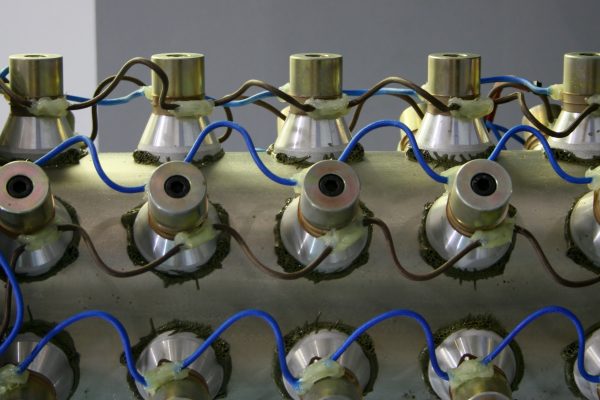continuous-flow reactors
based on High Power Ultrasound technology
Our patented continuous-flow reactors based on High Power Ultrasound [HPU] are designed for the inline processing of highly viscous products for processing industry. Modular design and use of standardized parts allows for the adaptation of our ultrasound reactors to different products and processes.
WHY CHOOSE SONICAT SYSTEMS REACTORS?

Reduced maintenance costs

User-friendly operation

Reduced energy and operating costs

Good returns on capital investment

Commercially available in different sizes conceived different for processing rates

Improved ultrasound treatment uniformity compared with traditional batch reactors

Design solution tailored to specific needs of each food manufacturer

Safe, reliable, and environmental friendly technology
SONICAT SYSTEMS REACTORS
Innovative equipment based on High Power Ultrasound technology
WHAT IS ULTRASOUND TECHNOLOGY?
Ultrasound refers to sound waves with frequencies exceeding 20 kiloHertz (kHz) of the sonic spectrum, which is the upper limit audible to humans.
The ultrasonic transducer is the electronic device used to create these sound waves, by means of converting electrical energy into sound energy (pressure).
Pressure fields created by the ultrasounds can be applied to a solid, liquid or gas medium, to alternately compress and stretch the molecular structure of the medium. Nowadays, ultrasound is used in many different sectors and applications: to, such as for the detection of objects and measurement of distances in medical imaging, or in industry for cleaning, mixing, and accelerating chemical processes, among other applications.

HOW ACOUSTIC CAVITATION WORKS?
When HPU is applied to a liquid, it generates acoustic fields (pressure fields) inducing pressure variations in the medium, subjected to mechanical forces that create alternating cycles of low-pressure (depression) and high-pressure waves (compression), causing the formation of millions of small vacuum bubbles. Two possible events may occur:
·The bubbles keep growing over a 1 – 4 compression/rarefaction cycles, until they reach their critical size. Finally, they collapse and violently implode, transforming the shock waves into effective mechanical effects. The implosion results in intense shear forces in the liquid media, and very high local pressure and temperature (5,000 ºC and 500 bar) within the bubble, whilst the overall temperature and pressure of the bulk media remains at ambient conditions. These type of bubbles are called ‘transient cavitation bubbles’. This phenomena is called acoustic cavitation.

Cavitation also results in the generation of local turbulence and liquid micro-circulation, enhancing the rates of transport processes. Thus ultrasound-induced acoustic cavitation can be used to perform chemical or mechanical processes at ambient temperatures, and finds widespread applications in chemistry, industry, materials, life sciences, and medicine.